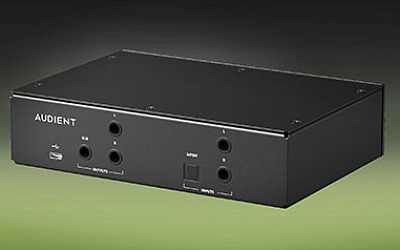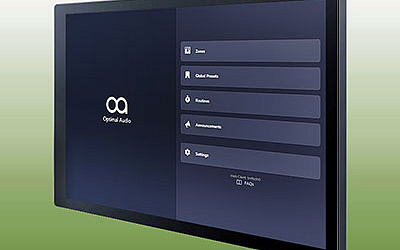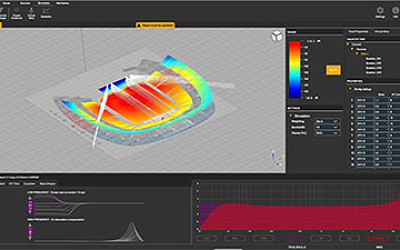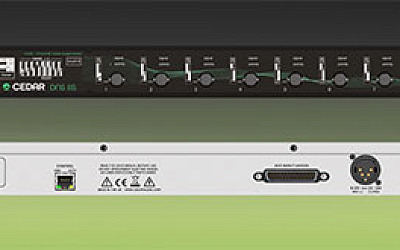Aimed at live events, RCF’s D3pth Immersive Audio Engine reckons to ‘improve the acoustic landscape and the intelligibility for the audience, with an enhanced palette of mixing options for sound designers, audio engineers, artists and producers’.
The D3pth product line is intended to work with practical live loudspeaker configurations – a front system set-up with line arrays arranged above the performing stage, is sufficient to create an Immersive Audio sound field that allows the listener to perceive an expanded stereo image, with increased transparency and intelligibility. Suggested configurations feature between five and nine line-array clusters, set up over the performing stage. RCF calls the improvement over a traditional dual/mono set-up ‘stunning’, and the system does not limit the sweet spot in which the enhanced stereo field is perceived, obtaining an claimed stereo coverage of around 70 per cent in a typical venue set-up.
The system’s E1 rackmount audio unit provides the necessary processing to handle an Immersive Audio system and is controlled in real-time via the D3pth Control Software. With more generic speaker layouts or 360° installations, the D3pth E1 rackmount engine can handle a fully immersive by switching to the Full system mode.
D3pth Immersive Audio technology enhances the mix options at a live event creatively, improving intelligibility and clarity. An FOH engineer can track the real position of performers on stage –aligning visual and auditory cues – or he distribute source material to different panning positions to enhance perceived separation of sources. Secondary instruments, background vocals, synth cues, auxiliary percussive instruments can be perceived more clearly and contribute to improve the emotional involvement of listeners. Rendering of stereo signals is more precise, and their overall width can be adjusted to optimize the spaciousness they convey. As an overall result, the emotional content of a live event can be increased and made clearly evident, significantly more than isolated, headphone-based listening of recorded content.
To maximise the stereo envelopment of a frontal Immersive Audio system, a dedicated convolution-based reverb section has been fine-tuned and combined with an acoustics-related reverb section. The acoustical engine provides early reflections and contributions from a generic virtual room to improve the perception of audio object positioning and is affected by audio objects’ positions. The convolution-based section finds its use as a creative tool and is mainly intended as a replacement or improvement over the typical stereo reverb, usually available in digital consoles. The creative reverb section is designed to ensure a balanced and wide stereo tail so that the mix is not altered beyond the mixing engineer’s intentions. For each of the audio objects to be mixed in Immersive, dedicated Mode and Depth controls are available. Depending on the nature of audio signals and the artistic intent of the mixing engineer, these controls can be quickly adjusted to obtain the desired result.
More: www.rcf.it



